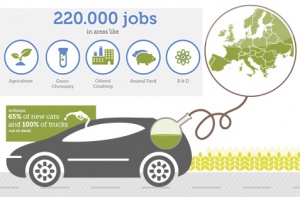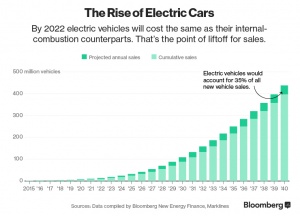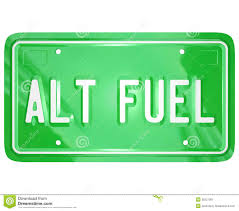Around 81% of the present global energy supply is based on fossil fuels.Increasing air pollution and climate changes resulting from the emission of greenhouse gases point towards a worldwide crisis. With the recent efforts to reduce the fossil fuels consumption, new energy sources have been studied and developed. Who has never dreamed of driving a water vehicle? It is possible now!
Water-fueled cars have been the subject of uncountable international car patents and media news coverage. Despite most unsuccessful attempts and even frauds, there have been some registered patents of cars run on water. Actually, just as an example, according to the Industrial Property Digital Library (IPDL), in 2008, a Japanese company called Genepax registered the patent of their water powered car. Genepax faced bankruptcy and the dream did not come true.
For the last 10 years, however, alternatives to fossil fuels have been developed in such a way that one can say that we have been living with these technologies without realizing their existence at all. Electric vehicles and hybrids have had a higher demand from the ordinary user, mostly in European countries, where the dissemination and awareness of this problem have had a bigger impact on the citizens’ lives.
At the moment, the alternative fuels are focused on the biofuel, hydrogen and electric vehicles.
Biofuels: biodiesel and bioethanol
There are around seven biofuels, but only three are present in the automobile industry – biodiesel, bioethanol and biogas. Biodiesel, as well as the others, come from a renewable resource, biomass; therefore they are an alternative to the traditional fuels. Another advantage of the biodiesel is the fact that it encourages the development of agriculture on poorer rural areas, generating employment and avoiding desertification. Biodiesel is used along with diesel oil in conventional cars (for a full tank, the biodiesel proportion should be 5-30%) and it is also used plain in agricultural machinery.
 Bioethanol, also known as the alcohol car, is used along with gasoline. This fuel management grants a decrease of around 25% on the emissions of pollutant gases. The country which developed this technology the most is Brazil, where a proportion of the sugar production (from sugar cane) is specifically destined to the production of bioethanol. Finally, there is biogas, which is used in a way similar to GPL. Unfortunately, because it is obtained from landfills and house and factories waste, its production becomes a time consuming process.
Bioethanol, also known as the alcohol car, is used along with gasoline. This fuel management grants a decrease of around 25% on the emissions of pollutant gases. The country which developed this technology the most is Brazil, where a proportion of the sugar production (from sugar cane) is specifically destined to the production of bioethanol. Finally, there is biogas, which is used in a way similar to GPL. Unfortunately, because it is obtained from landfills and house and factories waste, its production becomes a time consuming process.
Hydrogen: water cars?
There are 2 types of hydrogen vehicles. One in which the hydrogen goes directly to the engine, and another in which the hydrogen is sent into fuel cells, which in turn will generate electric energy, powering the electric car engine, a kind of hybrid. Hydrogen is extremely abundant on Earth as it is present in water and vehicles equipped with this technology release 0 pollutant gases. The biggest obstacle to this alternative is the process of obtaining hydrogen, which is still very expensive
Electric: as easy as plugging a plug in the socket
In this category, there are two types: the plain electric vehicles and the hybrids. The latter are the combination between conventional and electric engines. These can be driven using only electric power, although their battery autonomy is quite short (20-40km). The electric engine can be charged, not only on filling stations created for the purpose, but also when the car is braked or the car is not using the
accelerator to move. The kinetic energy is used to charge the car batteries which will power the engine later. Totally electric vehicles work the same way, but the low battery autonomy still poses a big obstacle. A common electric utilitarian, such as Nissan Leaf, has an autonomy of around 250km, thus not being able to perform long journeys. Also, there is the Tesla Model S, which is considered to be the reference of this technology, achieving some astonishing 500km of autonomy, with very good performances and 0 emissions of noxious gases into the atmosphere.
Over the years, the growth of the electric vehicles and hybrids has been increasing,
mostly in the European market.
Using Portugal as an example, between 2014 and 2015 the electric cars sales increased by 173% approximately, and the hybrids sales by 78%, noting that this data , provided by Associação Automóvel Clube de Portugal, refers to 2014 and the first 9 months of 2015. Yet, despite this huge increase on sales, the electric cars still only represent 1,3% of the total of vehicles sold in Portugal. They are also the least commercialized in the rest of Europe, although the sales increase continuously. Professor Patrick Jones, in a scientific article from September 2014
“Fossil fuels are a finite resource and, as our population continues to grow, we are going to have to come up with new ways to meet increasing energy demands. “, defended Patrik Jones, head of Department of Life Sciences from the Imperial College London . “In a new study a team of scientists from our institution and the University of Turku in Finland are using Escherichia coli to interrupt the biological process that turns fatty acids into cell membranes and generate fuel” he added.
We are, I do believe, far from having bacteria providing fuel to make one’s car run in the morning, as well as water cars remain either as prototypes or frauds. Actually, in a close future, electricity seems to be one of the alternatives, and the hybrids will establish the bridge. Of course other more attractive alternatives may emerge! One thing for sure: pollutant fuels must be replaced by greener ones!




You must be logged in to post a comment.